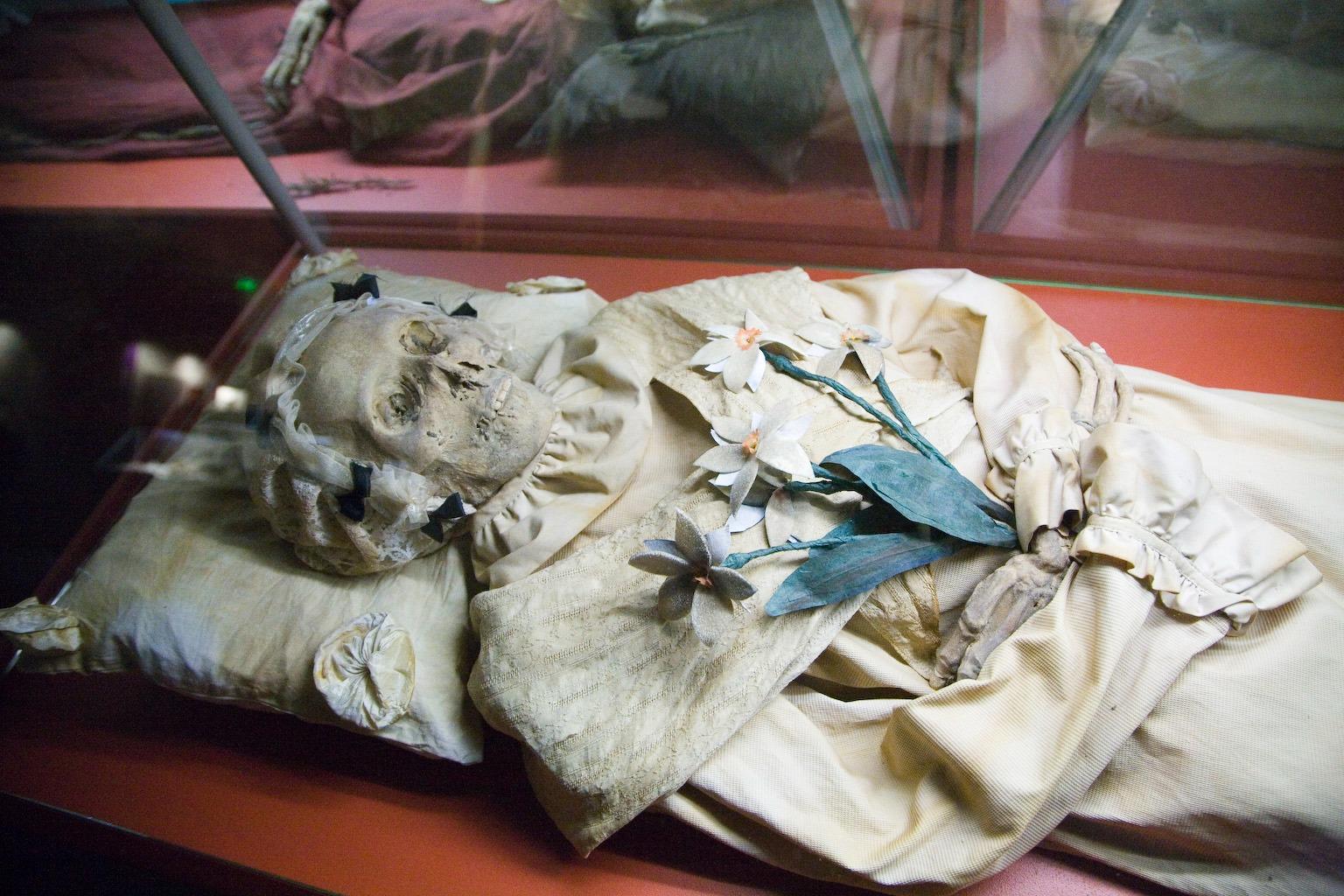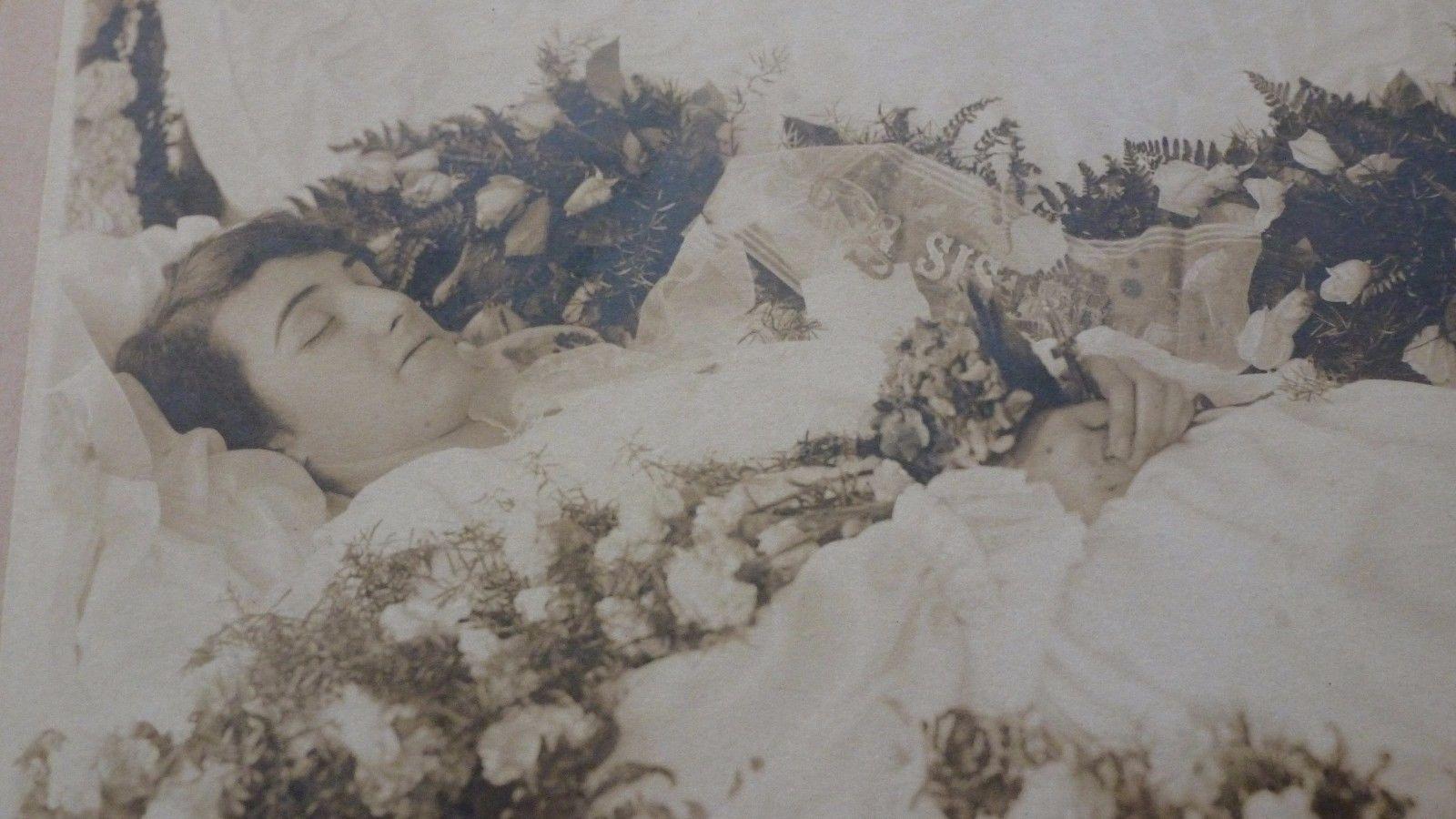In the quiet Hungarian town of Vác, an old Dominican church stood largely unnoticed for centuries. Its history stretched back hundreds of years, but few could have imagined the extraordinary scientific treasure hidden beneath its foundations. In 1994, as the church was being demolished, archaeologists opened its crypt and encountered something remarkable: 265 naturally preserved mummies, their bodies wrapped and sealed in coffins that had withstood more than two centuries. Unlike the desiccated remains found in Egypt or South America, these mummies still bore intact skin, hair, and clothing. The preservation was so complete that scientists quickly realized they had stumbled upon one of the most important collections of human remains in European history.
Why Were They Preserved So Well?

The preservation of the Vác mummies was not the result of deliberate embalming but rather a unique combination of environmental conditions. Between 1730 and 1838, parishioners of the Dominican church placed their dead in wooden coffins within the crypt. The chamber’s cool, dry air, combined with a steady 90% humidity and good ventilation, created the perfect environment for natural mummification. Even after Emperor Joseph II of Austria issued a ban in the 1780s on crypt burials to prevent overcrowding and disease, local residents in Vác continued the practice for cultural and religious reasons. This persistence inadvertently created a time capsule, preserving not only individuals but also valuable clues about health, disease, and life in the 18th century.
The Hausmann Family: A Story Within the Crypt
Among the hundreds of remains, one family captured particular attention: the Hausmanns. Their story, reconstructed through both historical records and scientific analysis, provides a deeply human connection to the broader discovery.
-
Terézia Hausmann, the eldest daughter, died at only 28 years old on December 27, 1797.
-
Her younger sister, Barbara, passed away several years earlier.
-
Their mother, whose name is lost to history, was also found among the mummies.
Analysis revealed that all three suffered from tuberculosis (TB), the deadly bacterial infection that plagued Europe for centuries. Terézia likely witnessed her mother and sister succumb to the disease before falling ill herself, a family tragedy sadly common in the pre-antibiotic era.
Tuberculosis Before Modern Medicine

At the time of the Hausmanns’ deaths, the true cause of tuberculosis was unknown. The disease—caused by Mycobacterium tuberculosis—primarily attacks the lungs, leading to persistent cough, fever, fatigue, and eventual death. Entire communities were devastated, with TB often described as “the white plague” of Europe. It wasn’t until 1882 that German physician Robert Koch identified the bacterium, paving the way for modern treatment. The mummies of Vác provide an invaluable record of tuberculosis before antibiotics, allowing scientists to study the pathogen as it existed centuries ago.
A Treasure for Science: Studying the TB Genome
Because the Vác mummies were so well preserved, their tissues still contain DNA—not only of the individuals themselves but also of the microbes that infected them. Scientists extracted genetic material from the remains and sequenced ancient TB genomes, publishing their findings in Nature Communications. What they discovered was groundbreaking. Some strains of TB found in the Hausmann family matched genetic sequences still present in Europe today, proving that certain lineages of the disease have circulated for over 200 years. Others traced back even further, to the Roman era, showing how the bacterium has evolved and adapted across centuries. Even more surprising, in some cases, two strains of tuberculosis were found within a single individual, revealing that multiple variants of the disease coexisted in the same community.
Professor Mark Pallen of Warwick Medical School noted that studying these genomes sheds light on how TB has spread, mutated, and survived. By comparing ancient strains to modern ones, researchers can better understand why certain types resist drugs and why the disease continues to infect millions worldwide.
Lessons for Modern Medicine

The scientific importance of the Vác mummies extends beyond history. Tuberculosis remains one of the world’s most persistent killers, causing 1.3 million deaths in 2022 according to the World Health Organization. Drug resistance is a growing challenge, as strains adapt to antibiotics. By analyzing TB before the antibiotic era, scientists can identify the pathogen’s natural evolutionary patterns. This knowledge could lead to better treatments, vaccines, and strategies for fighting resistant forms. In this way, the tragedy of the Hausmann family has become a tool for protecting future generations.
Cultural and Historical Insights
Beyond medicine, the mummies offer a rare glimpse into 18th-century Hungarian life. Their clothing, shoes, and even rosaries remained intact, reflecting both religious devotion and social status. Some individuals were buried in richly embroidered garments, while others wore simple attire. The preservation of children, adults, and elders provides a cross-section of society at the time. The crypt is not only a scientific archive but also a cultural one, preserving everyday details that rarely survive in historical records.
Ethics and Preservation
After their discovery, the mummies were carefully transferred to the Hungarian Natural History Museum in Budapest. There, they continue to be studied under strict ethical guidelines. While some are displayed in exhibitions, many are kept in climate-controlled storage to prevent deterioration. The challenge is to balance scientific research, public education, and respect for the individuals who were once laid to rest in a sacred space.
A Bridge Between Past and Present
The story of the Vác mummies highlights the unexpected ways in which history, culture, and science intersect. A burial practice once condemned by imperial decree ended up preserving evidence crucial to modern medical research. A family struck down by tuberculosis centuries ago has helped unlock secrets that may guide doctors today. And a small town in Hungary has become known worldwide for a crypt that links human tragedy to human progress.
Conclusion: From Silent Tomb to Living Science
The 265 mummies of Vác are more than archaeological curiosities—they are voices from the past, carrying stories of faith, suffering, and resilience. Through the Hausmann family, we see the intimate impact of a disease that shaped history. Through genetic analysis, we witness the continuity of pathogens across centuries. And through ongoing research, we glimpse the possibility that these ancient remains may one day contribute to defeating tuberculosis altogether. What began as a demolition site in 1994 has become a cornerstone of both historical understanding and medical science. In the end, the crypt of Vác reminds us that the past is never truly buried. It waits, preserved in silence, until science is ready to listen.
Sources: